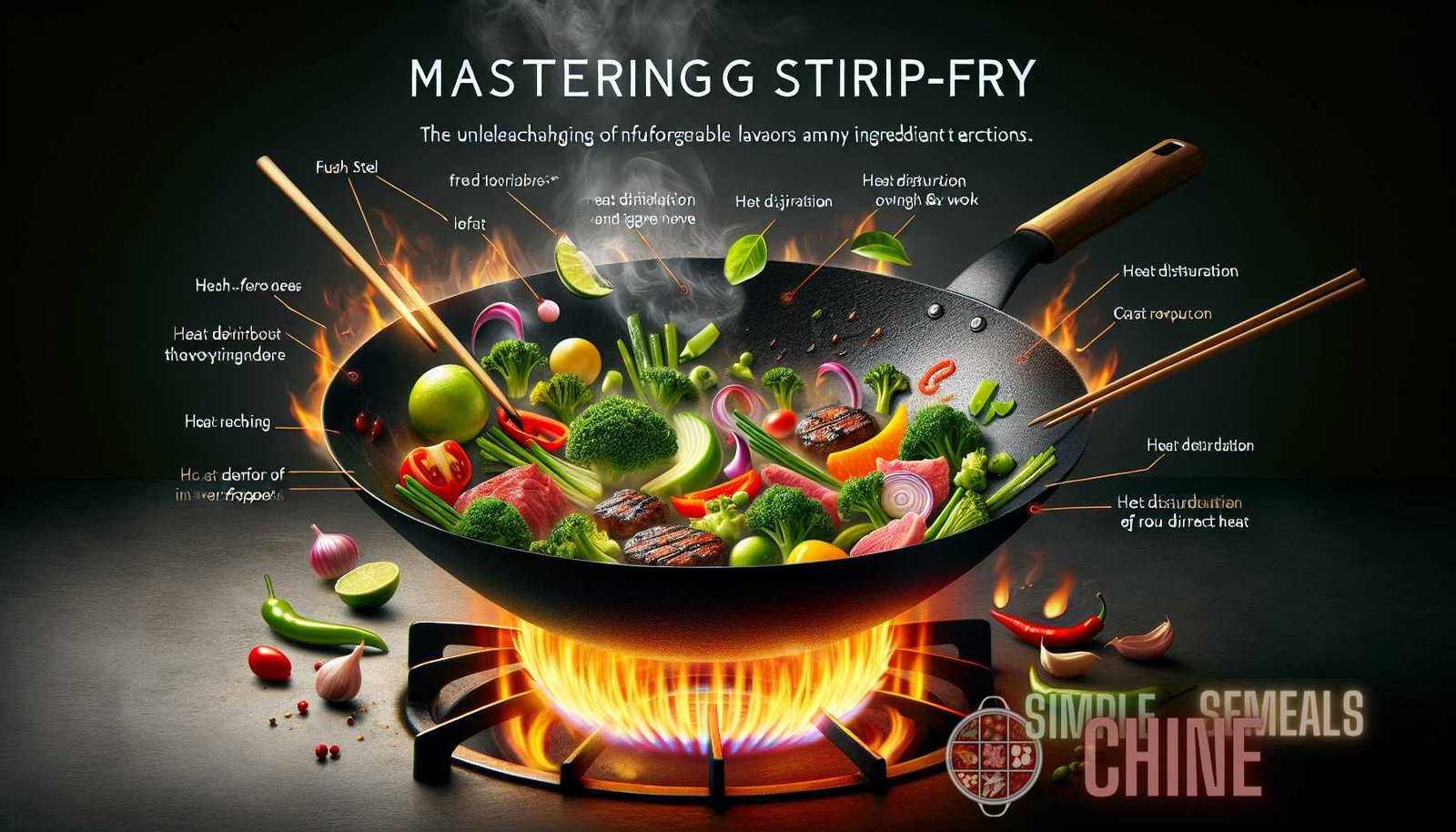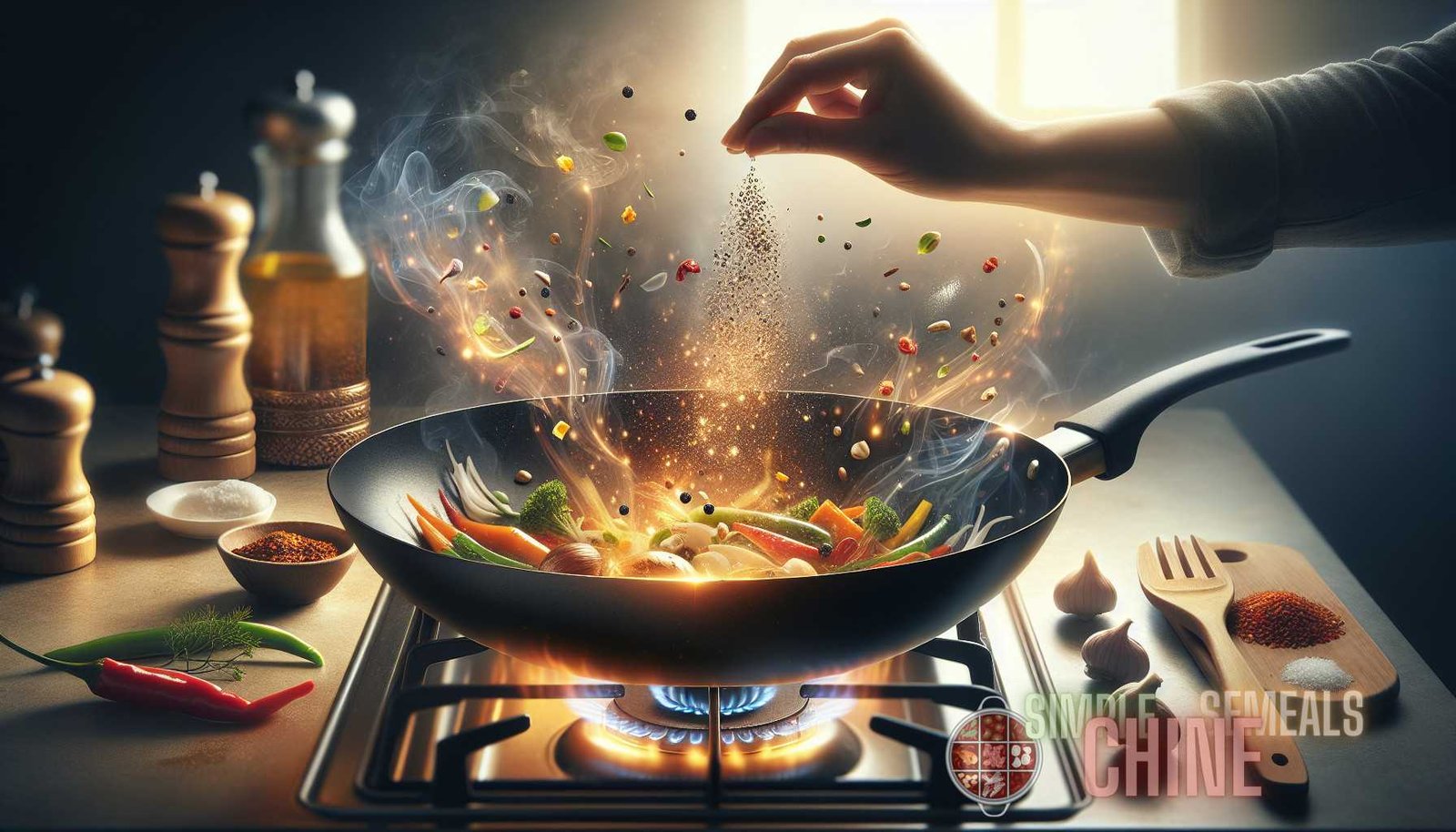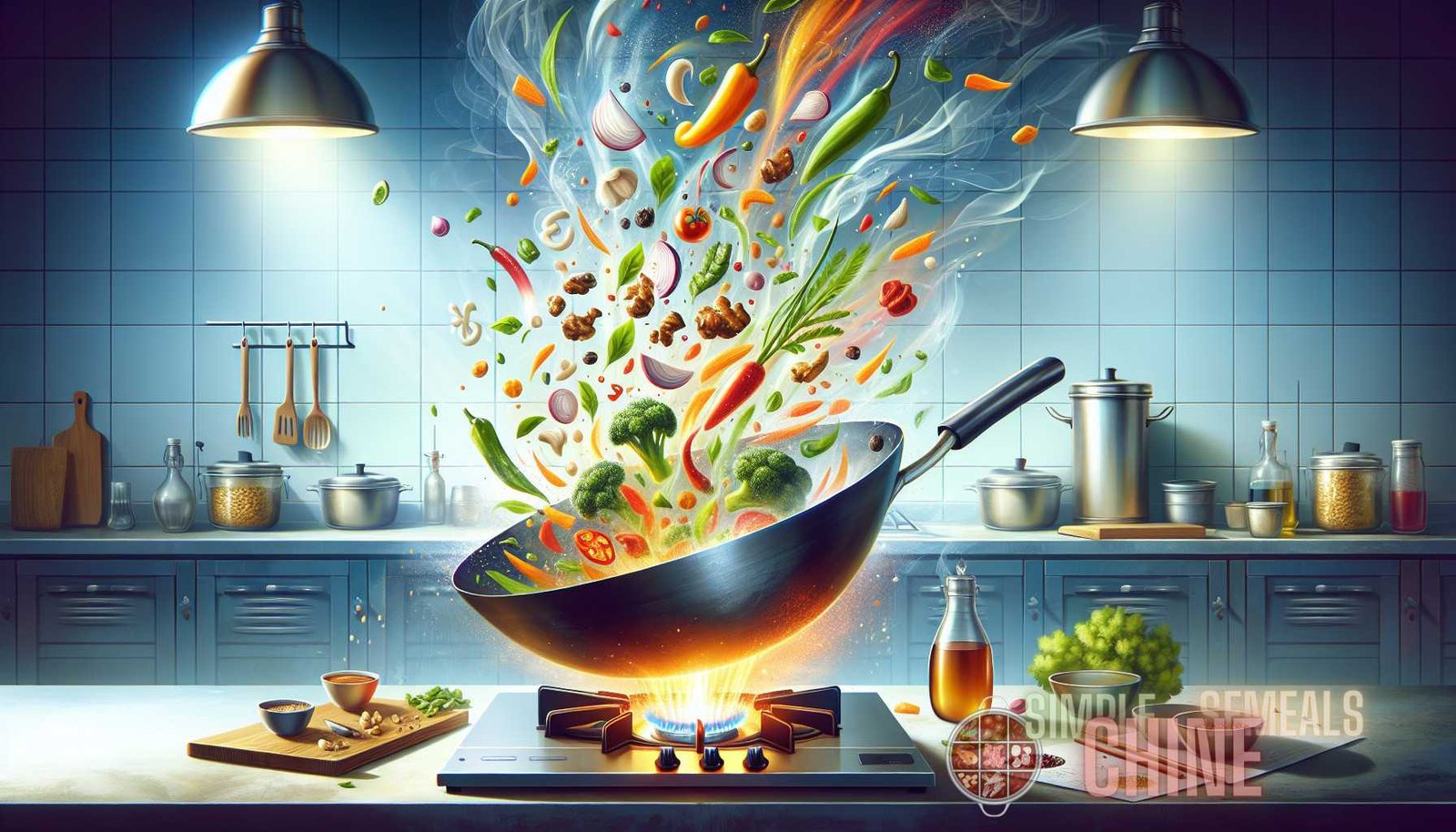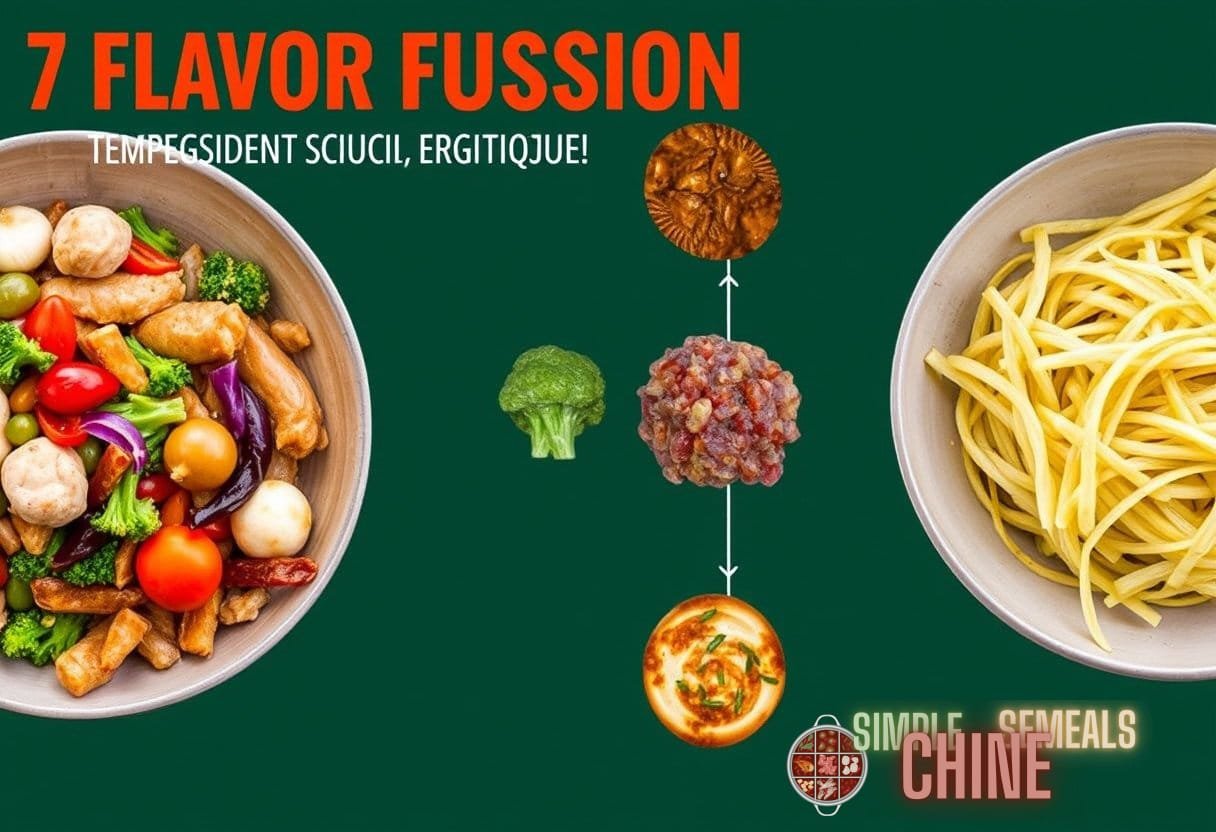The Science of Stir-Fry: Understanding the Complexities of Heat and Ingredient Interactions for Unforgettable Flavors and Texture
Stir-frying is a cooking technique that originated in China and has become popular worldwide due to its ability to create delicious and nutritious meals in a short amount of time. This quick and versatile method involves cooking ingredients in a hot pan or wok with minimal oil, resulting in a flavorful, crisp dish. But what makes stir-frying so unique and how can you achieve stir-fry mastery? In this comprehensive guide, we will explore the science behind stir-frying, focusing on the complexities of heat and ingredient interactions that contribute to unforgettable flavors and textures.
The Fundamentals of Stir-Frying
Before diving into the science behind stir-frying, let’s start with the fundamentals of this cooking technique. Stir-frying involves quickly cooking small, uniform pieces of ingredients in a hot pan or wok over high heat. The ingredients are constantly stirred or tossed to ensure even cooking and prevent burning. The high heat and constant movement create a unique combination of flavors and textures that are characteristic of stir-fried dishes.
Now, let’s explore the science behind stir-frying and how heat and ingredient interactions play a crucial role in achieving stir-fry mastery:
Heat and Stir-Frying
The high heat used in stir-frying is essential for achieving the characteristic flavors and textures of this cooking technique. Here’s how heat impacts the stir-frying process:
1. Maillard Reaction
One of the key chemical reactions that occur when stir-frying is the Maillard reaction. This reaction takes place between amino acids and reducing sugars in the ingredients, resulting in the browning and development of complex flavors. The high heat in stir-frying facilitates the Maillard reaction, leading to the rich, savory flavors that are synonymous with stir-fried dishes.
Learn more about the Maillard reaction and its role in stir-frying.
2. Evaporation
Heat promotes evaporation, and in stir-frying, this helps to quickly cook the ingredients and prevent them from becoming soggy. As the ingredients are exposed to the high heat, their moisture evaporates rapidly, ensuring that they remain crisp and retain their natural flavors. The evaporation process also helps to concentrate the flavors, resulting in a more intense taste.
3. Smoke Point
When stir-frying, it is important to use an oil with a high smoke point. The smoke point is the temperature at which an oil starts to smoke and break down, affecting the taste and quality of the dish. Oils with high smoke points, such as peanut oil or vegetable oil, can withstand the high heat required for stir-frying without burning and imparting unwanted flavors to the ingredients.
4. Heat Transfer

Heat transfer is another important factor to consider in stir-frying. The high heat applied to the pan or wok should be evenly distributed to ensure that the ingredients cook quickly and evenly. Carbon steel and cast iron pans are popular choices for stir-frying as they have excellent heat retention and distribution properties. It is important to preheat the pan or wok before adding the ingredients to ensure proper heat transfer.
Ingredient Interactions in Stir-Frying
While heat plays a crucial role in stir-frying, the ingredients you choose and how they interact with each other during the cooking process are equally important. Here are some key ingredient interactions to consider for stir-fry mastery:
1. Flavor Combinations
Stir-frying allows for endless flavor combinations by combining different ingredients. The goal is to balance and enhance the flavors of the individual ingredients to create a harmonious and tasty dish. For example, pairing protein-rich ingredients like chicken or shrimp with a variety of vegetables can create a well-rounded stir-fry. Experimenting with different flavor profiles, such as sweet and savory or spicy and tangy, can lead to exciting and delicious results.
2. Texture Contrast
In addition to flavors, stir-frying also focuses on creating contrasting textures. The combination of crisp vegetables, tender meats, and crunchy nuts or seeds adds depth and interest to the dish. It is important to consider the cooking time of each ingredient to ensure that they reach the desired texture. For example, adding vegetables with longer cooking times, such as carrots or broccoli, earlier in the cooking process, while adding quick-cooking ingredients like leafy greens towards the end, can help achieve the perfect texture contrast.
3. Marination and Seasoning
Marinating the ingredients before stir-frying can enhance their flavors and tenderize proteins. A marinade can include a combination of ingredients such as soy sauce, rice vinegar, garlic, ginger, and spices. The marinade not only adds flavor but also helps the ingredients to caramelize during stir-frying, contributing to the overall complexity of the dish. Seasoning the stir-fry with soy sauce, oyster sauce, or other condiments should be done towards the end of the cooking process to prevent the dish from becoming too salty.
4. Timing and Order
The timing and order of adding ingredients in stir-frying are crucial to achieving perfect results. Ingredients that require longer cooking times, such as meat or root vegetables, should be added first to ensure they are cooked through. Delicate ingredients such as leafy greens or herbs should be added towards the end to prevent overcooking. By carefully planning the timing and order of ingredient additions, you can achieve a well-cooked stir-fry with each component perfectly cooked.
Stir-Fry Mastery: Tips and Techniques
Now that you understand the science behind stir-frying, here are some tips and techniques to help you achieve stir-fry mastery:
1. Prep Ahead
Stir-frying is a fast-paced cooking technique, so it is important to have all your ingredients prepped and ready before you start cooking. This includes cutting vegetables into uniform pieces, marinating proteins, and preparing any sauces or seasonings. Having everything organized and within reach will help you stir-fry with ease and prevent any ingredients from overcooking.

2. High Heat
Ensure that your pan or wok is properly preheated before adding the ingredients. This will help to evenly distribute the heat and prevent sticking. A hot pan is essential to achieve the characteristic flavors and textures of stir-frying. To test if the pan is ready, sprinkle a few drops of water on the surface—if they sizzle and evaporate quickly, it’s time to start stir-frying.
3. Constant Movement
The key to successful stir-frying is constant movement. Use a spatula or a pair of tongs to toss and stir the ingredients continuously. This will help to ensure even cooking and prevent any burning. The constant movement also helps to distribute the flavors and sauces evenly throughout the dish.
4. Don’t Overcrowd the Pan
It is important to avoid overcrowding the pan when stir-frying. Adding too many ingredients at once can lower the temperature and result in uneven cooking. If you need to cook a large quantity, it is better to stir-fry in batches. This will allow the ingredients to cook quickly and evenly, ensuring that they retain their flavors and textures.
5. Use the Right Sauce Consistency
The sauce is an important component of a stir-fry, as it helps to enhance the flavors and coat the ingredients. It is important to achieve the right consistency for the sauce. If the sauce is too thick, it may overwhelm the dish, while if it is too thin, it may not cling to the ingredients. Adjust the sauce consistency by adding more liquid or thickening agents such as cornstarch, depending on your preference.
6. Practice and Experiment
Like any cooking technique, stir-frying requires practice and experimentation. Don’t be afraid to try new ingredients, flavor combinations, and techniques. Adjust the heat, cooking time, and seasoning to suit your taste. With time and practice, you will develop your own stir-frying style and achieve stir-fry mastery.
Conclusion
Stir-frying is not just a cooking technique, but a culinary art that combines heat and ingredient interactions to create unforgettable flavors and textures. By understanding the science behind stir-frying, you can elevate your cooking skills and achieve stir-fry mastery. Remember to focus on heat management, ingredient interactions, and essential techniques to create delicious and nutritious stir-fried dishes that will impress your family and friends.



